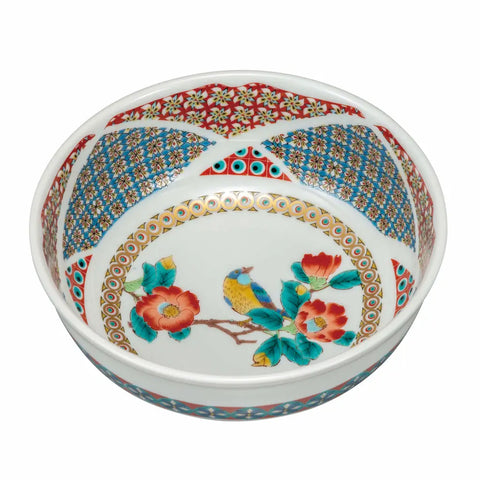
Chirashi-sushi (ちらし寿司) is a traditional Japanese type of sushi, served at celebrations such as weddings, birthdays, festivals, and New Year's. The word chirashi means "to scatter" ingredients, so chirashi-sushi literally means "scattered sushi. There are two types of chirashi-zushi: chirashi-zushi with seafood such as salmon roe and tuna, and chirashi-zushi with seasonal ingredients such as shiitake mushrooms and green beans. The rice used for chirashizushi is short-grain rice, which is characteristic of Japanese rice, and seasonal vegetables, seafood, shredded egg, and chopped nori (seaweed) are sprinkled on top to add color. The name also varies by region. In the Kansai region, such as Osaka and Kyoto, it is called "bara-chirashi," while in the Kanto region, such as Tokyo, it is called "chirashisushi.


History of Chirashi-sushi
Chirashi-sushi has a long history, dating back to the Edo period (late 17th century to early 19th century). In the Edo period, sushi was not shaped like today's nigiri-zushi, but was a mixture of vinegared rice and ingredients. During the Edo period, it developed as a food culture for the common people and was a familiar dish at ryotei (Japanese-style restaurants) and yatai (street stalls).
Today, we will show you how to make chirashizushi. Please refer to this page for a slightly modified version of how to make chirashisushi, including marinating tuna and salmon.
How to make Chirashi Sushi
Chirashi-zushi recipe
[Ingredients for vinegared rice]
- Rice about 600g
- vinegar 4 tablespoons
- Mirin 1 tablespoon
- Sugar 3 tablespoons
- 1 teaspoon salt
- White sesame seeds 2 tablespoons
[Vegetables and Seafood Ingredients]
- Tuna
- salmon
- Scallops
- Avocado
- Egg
- Cucumber
- Salmon eggs
- Sakura Denbu
- Vinegar rice
Step 1: Make vinegar mixture.
Add vinegar, sugar, salt and mirin to a bowl and mix well.

Step 2: Make vinegared rice
Wash the rice and soak in water for about 30 minutes, then cook in a rice cooker.
To cool the rice. We recommend using a large bowl so that the water can evaporate easily. Add the ingredients and mix well. Once mixed, add the white sesame seeds and mix.



- Make the marinated tuna and salmon.
[Sauce Ingredients]- 4 tablespoons soy sauce
- 2 tablespoons sesame oil
- 1 teaspoon gochujang
- Pinch of grated garlic
- Pinch of grated ginger
- 2 teaspoons sugar
- 1 teaspoon alcohol
Step 3: Make pickles
Cut the tuna and salmon into 1cm pieces, add the tuna and salmon to the sauce, mix a little and set aside.


- Omelette
Step 4: Mix the eggs and seasonings
[Tamagoyaki Ingredients]
- 2 eggs
- 1 tablespoons sugar
- A little soy sauce
Mix the eggs in a bowl. Add 2 tablespoons and 1 teaspoon and mix.
When you rub the dots, they will come out very clean.
Step 5: Fry the eggs
Heat oil in a frying pan and when it sizzles, add eggs. Roll the eggs, add more oil, and roll again. When done, remove oil with paper towels.




 .
. 
Step 6: Slice the tamagoyaki
Cut the tamagoyaki into 1cm wide pieces.Cut other materials.
Step 7: Place the avocado, scallop and cucumber 1cm apart.


Step 8: Scatter the cut ingredients over the vinegared rice. Scatter them to fill in the gaps.

Step 9: Sprinkle the salmon roe and cherry blossom denbu on top and you're done.

Video of assembling the chirashi




